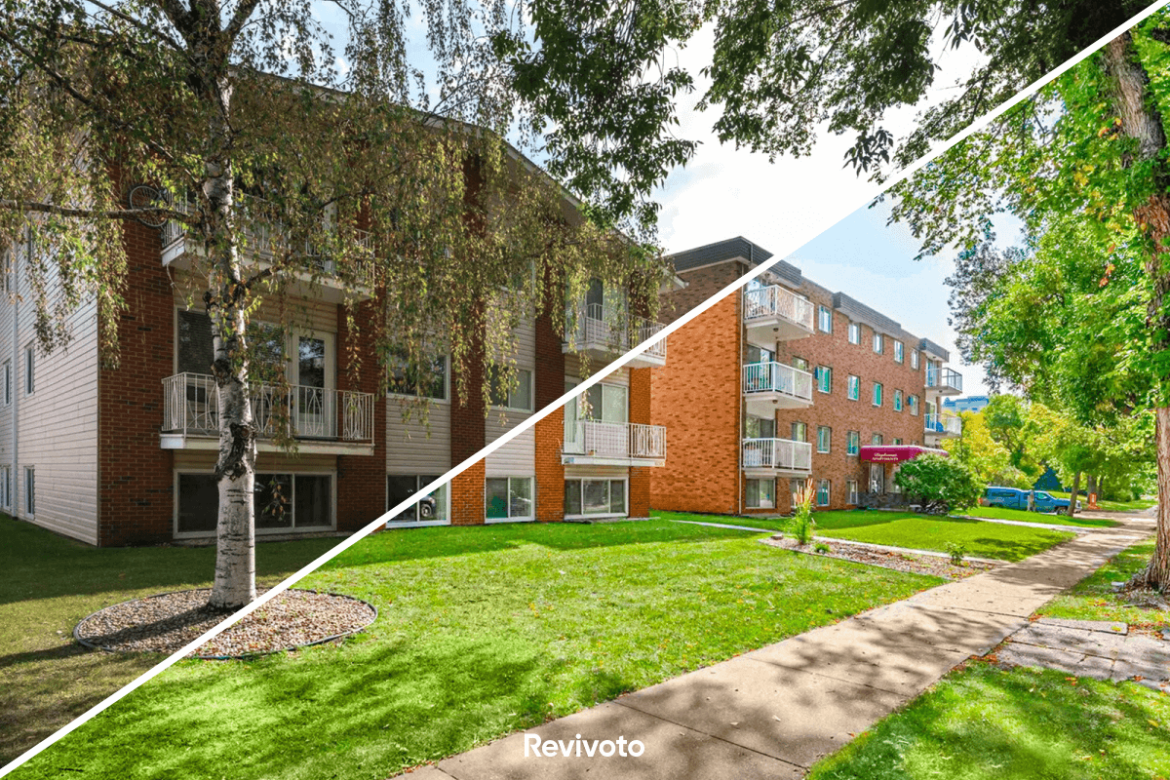In this post, we’ll discuss the definition of real estate image enhancement and its importance in attracting potential homebuyers.
Let’s face it! We are visual beings. We can see and recognize before we can talk. The fascinating part is that it’s not just about seeing – the optical quality matters. We do not accept a blurry or crooked image in our minds! We get glasses to enhance the visual inputs. That’s how much we care about sharpness.
Since the invention of photography, we have tried to simulate that authentic image. Today’s spectacular lenses capture every tiny detail, although not everyone can afford them, and sometimes they don’t do justice to reality. Still, we take high-quality pictures, even with our cell phones.
However, there is a shared experience, even with the best lenses, where the shot does not match what we see with our own eyes. If only we could get glasses for our cameras! We might not be able to do this (yet!), but we still long for that vivid frame, and that is where image enhancement becomes an asset for photography.
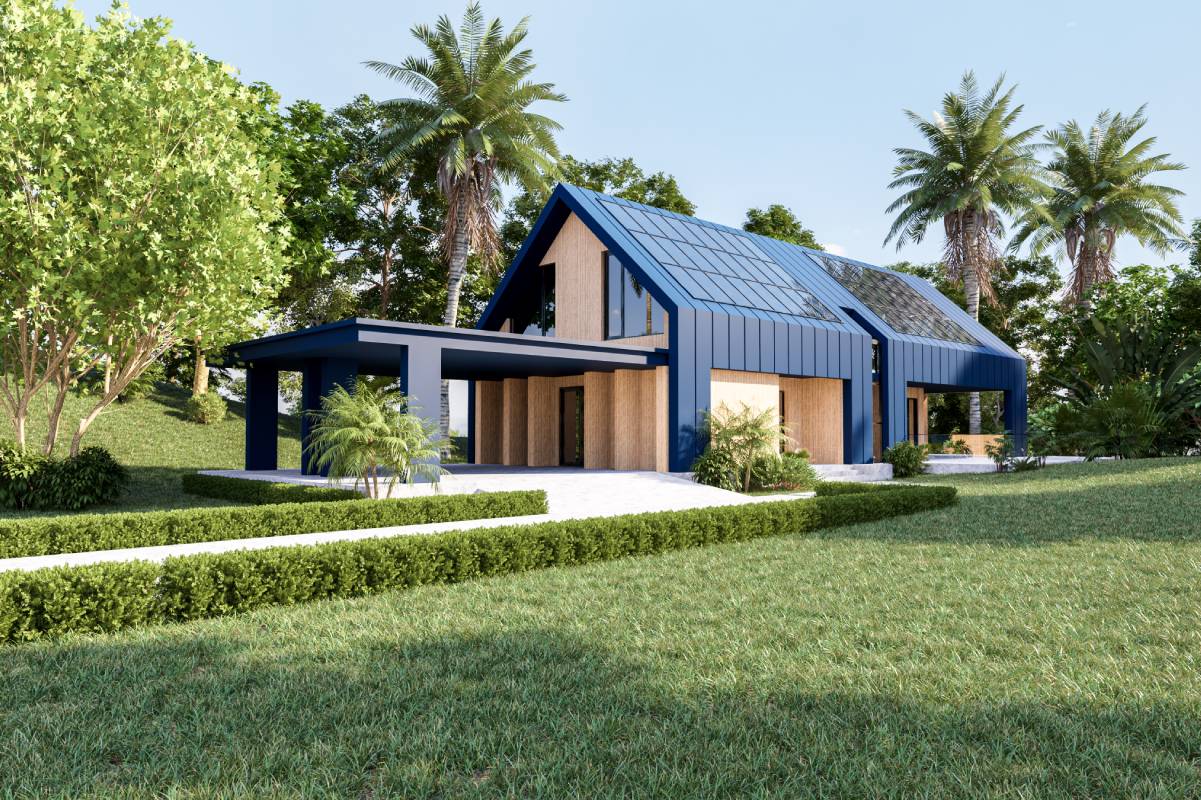
Table of Contents
Image Enhancement Definition
The technique of digitally modifying a stored image using software is called image enhancement. This procedure allows you to alter digital photos excelling for presentation or subsequent image analysis. For instance, you can eliminate noise, sharpen, or brighten an image, which makes it easier to identify important characteristics. Numerous types of software exist for image enhancement, including filters, image editors, and other tools for altering the attributes of a complete image or portions of an image. The following are some helpful examples and techniques for image enhancement:- Elimination of noise through a Wiener filter
- Linear contrast enhancement
- Equalization of histograms
- Equalization of adaptive histograms with a contrast constraint
- Stretching for decorrelation
The Finest Tactics for Real Estate Image Enhancement
Technological improvements have sped access to real estate listings for millions of homebuyers. Nowadays, real estate businesses use websites and other types of digital media to advertise their inventory of properties. Home-buyers visit these websites to learn about new listings and to explore and interact with real estate.
These websites and platforms rely heavily on images to entice visitors to their pages. Indeed, photography has never been more critical to real estate ventures than it is today. Photographs are the first thing buyers look at before checking out the listing description. It is more likely for a buyer to set a show or make an offer if the pictures give a comprehensive perception of the house. That is why flawless real estate photography is one of the principal ways to ensure a quick sale.
Being a real estate photographer calls for many days of photo shoots, not just for marketing purposes but also for mastering the tiny details. The proper time of day isn’t the sole consideration for a photographer when taking outstanding photos. Other elements, such as appropriate lighting, perspective selection, and color editing contribute to developing high-quality real estate photographs.
Considering that images are critical to generating leads and sales for real estate organizations, photographers must capitalize on this by using real estate image enhancement services specific for real estate to make the photos look a hundred times more appealing.
There are typical ways to improve real estate photos: sharpening the image, white balancing, adjusting the tone, changing the sky color, replacing the TV image, adding fire to the fireplace, lawn enhancement, removing dust spots, poll cleaner, and any reflection.
Of course, there are many ideas to enhance real estate photos, which can differ from one project to another, depending on the circumstances.
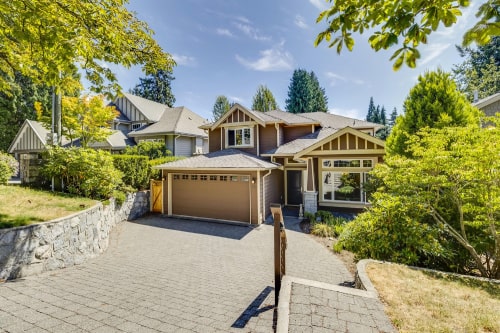
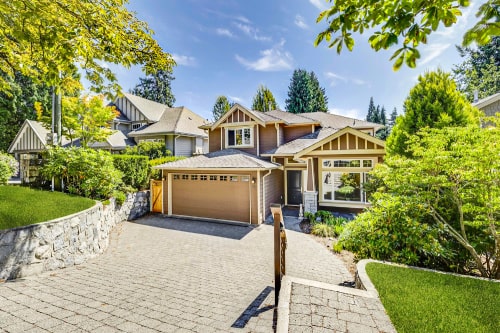
To order image enhancement at unbeatable price click below!
Real Estate Image Enhancement vs. Virtual Staging
You may make some changes by enhancing the photos, but you are not changing the reality. You are doing the opposite by making the photos look as realistic as possible. Real estate image enhancement fills the gap between how the property is and how it is captured.
With virtual staging, you are entering into another reality: the virtual. You are adding furniture and accessories to an empty room or a room designed with different furnishing. But in actuality, you are not changing anything. All the alterations happen digitally to create an image you can’t take by a camera. And that’s the main difference between real estate image enhancement and virtual staging. While real estate image enhancement starts and ends with the actual reality, virtual staging only stems from there and creates a parallel reality.
Photo Retouching In Real Estate
There are a lot of terms in real estate photography referring to changes made to a photo. You have real estate photo editing services, image enhancement, photo retouching, etc.
While they are used interchangeably, and all refer to making changes in an image taken by a camera, professionally speaking, what makes them different is the type and extent of alterations.
Photo retouching in real estate is an improvement process removing flaws from an image. There are levels of retouching, beginning from essential touches to extensive changes. Part of it includes image enhancement that raises the quality of photos, but it goes beyond that. You can remove imperfections and change the tone, alter the mood of the setting, clean up the background and blend the images making it seem taken in one exposure and many other alterations that some go over the line of actual reality.
We can say that image enhancement is only one component of retouching. The significant characteristic of real estate image enhancement is the presentation of property as it is.
You retouch the photo if you want to show future buyers how the estate will look with some improvements. In this scenario, you have to disclose that information on the listing. On the other hand, if you are trying to show prospective home-buyers how the property actually is, you only use real estate image enhancement. That being the case, you don’t have to declare that the images are enhanced because you haven’t altered the reality of the property.
Putting it simply, you are either improving the property or the photo. Improving the reality is retouching, and improving the photographs is what we refer to as real estate image enhancement.
Why Is Real Estate Image Enhancement Critical?
Providing your clients with various high-quality photographs will give you an advantage, and it helps the real estate industry sell more properties in a shorter time. From a photographer’s perspective, the more real estate properties sold, the more gigs you may acquire, resulting in a more significant photographic business. However, why do homebuyers purchase properties more quickly due to image enhancement?Makes houses appear cleaner
Real estate image enhancement can help erase flaws created by natural phenomena. As you are aware, wind and rain can spread unwelcome dirt on the external walls, making cleanup a bother merely for a photoshoot. You may remove these blemishes and make the property look clean and lovely by using Image enhancement.Boosts the appearance of a property’s dimensions
People are more likely to investigate a property’s details if they know it is vast and open. Real estate image enhancement helps you depict a larger-than-normal space by creating warm and inviting photos of a property. It also allows homebuyers to determine better if the rooms meet their requirements.Highlights the property’s distinctive characteristics
Real estate image enhancement may reveal the house’s intricate details, whether you are photographing the interior or the exterior.Improves the reputation of real estate businesses
Image enhancement in real estate highlights the remarkable features of the house to potential buyers and demonstrates that your company is committed to presenting truthful and quality homes to the market.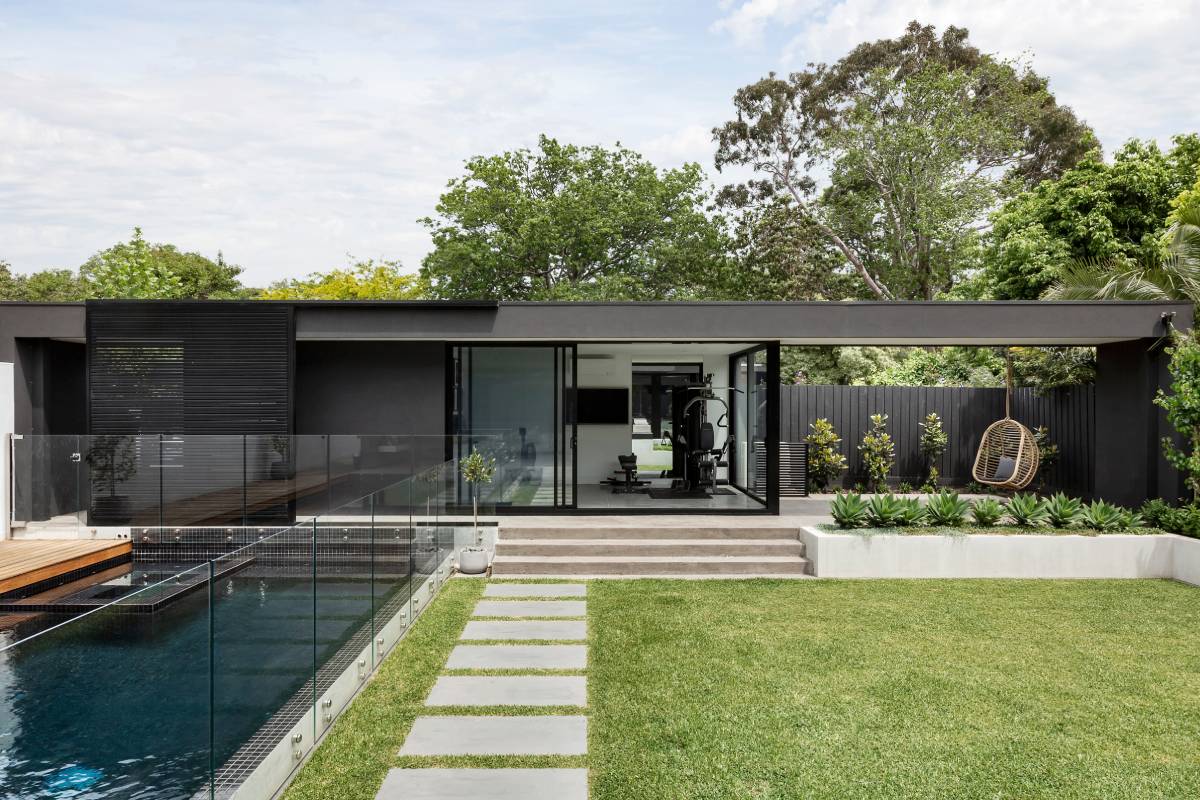
To order image enhancement at unbeatable price click below!
Real Estate Image Enhancement Techniques
Image enhancement in real estate market needs a plan and strategy. There are some tips for real estate photographers, and you can also check our thorough guide to image enhancement for property listings. In a gist, you must know how many photographs to shooting, with which perspectives, under what lighting conditions, and in which areas of the property.
It requires understanding camera procedures that will result in optimal editing circumstances for optimum quality. Images can easily entice homebuyers. That is why photo editing is necessary for real estate photography.
Image enhancement helps to improve colors, crop items, boost lighting, modify settings, tweak proportions, and more. You can also benefit from resolution enhancers.
The following are a few essential methods for mastering real estate image enhancement.
Pre-shoot visit to the location
Regarding real estate photography, it’s not enough to know how to manipulate images in Photoshop. Some prior planning is required to make the most of a property’s features. For example, knowing where to shoot photos to highlight the home’s most notable features will help focus the homebuyers’ attention.
Utilize wide-angle lenses to generate a more expansive impression
Shooting photographs from broader perspectives allows more options for later editing.
Adjust the colors
When capturing photos, always remember the weather conditions, indoor and outdoor lighting, window tints, camera type, and settings. Make sure that the color scheme of the house and landscape are compatible with the surrounding environment. These variables all affect the color of the photograph. If you want to convey an accurate image to the buyer, use the color and saturation effects.
Crop and delete superfluous elements
Cropping off redundant portions of the image improves the frame of the image while also modifying its aspect ratio. Real estate photo enhancement aims to draw attention to the property, which could be the house, the yard, the pool, or the light fixtures that come with it. When editing a photograph, ensure to eliminate any distracting elements, such as the neighbor’s fence or a mailbox, before sending it out to potential buyers.
Verify the vertical alignment
Vertical correction should be applied to the image, as it is one of real estate photographs’ most critical editing benchmarks.
Replace the sky and improve the weather conditions
Sky replacement is a frequently used technique in real estate image enhancement. When the clouds appear drab, you must unquestionably replace them with clear, sunny skies. The result will radically alter the property’s outlook.
Layer numerous photos (HDR Bracketing)
You can create different copies of the same image with varying exposures by superimposing many shots of the same area during the editing, allowing you to choose the best elements of each layer that interact to create a realistic image.
Correct perspective
Architecture and real estate photography stand out by straight vertical and horizontal lines that do not converge. They can be distorted by various factors, including the lens’s curvature, the form of the room, and even the camera’s orientation.
Perspective correction is a technique for resolving this deformation and misalignment throughout the real estate image enhancement process to create a more natural-looking photograph. Additionally, aligning warped lines improves the image’s cohesiveness and compactness, allowing the viewer to concentrate on the photo’s primary points of interest.
Reduce the noise
Noise, often known as grain, looks like millions of blurry specks that degrade image quality. It arises as a result of issues like as low light conditions, pixel density flaws, light transmission errors, and even sensor size errors. Noise distorts otherwise stunning photographs, making them appear gritty and unpleasant. By applying real estate image enhancement techniques in property shootings, your image becomes sharper and brighter, increasing the quality of real estate listings.
Do it yourself or outsource the editing?
There are many factors for consideration here: your skills with photo editing software, the size of the property, your time, and your resources. You must consider that the editing process takes time and requires expertise; otherwise, the result won’t be satisfactory.
You should answer this question: how much my time is worth, and how much is the cost of using online services for real estate image enhancement and photo editing? Comparing the prices and packages of top platforms for image enhancement, you’d spend around 2 US dollars for each photo. Considering this, you can decide whether to outsource image enhancement of property listings or do it yourself.
Use Our Magic & Turnaround Photos!
Use Our Magic & Turnaround Photos!
Use Our Magic & Turnaround Photos!
Use Our Magic & Turnaround Photos!
Use Our Magic & Turnaround Photos!
Conclusion
Images communicate with the buyer in ways that words cannot, especially when the image highlights the product’s best features. Applying Image enhancement in real estate photography improves your shots, benefiting you as the photographer and the real estate business.
Diligent preparation from before the shoot to the attentive real estate image enhancement process afterward showcases the property’s best aspects and guarantees attracting buyers.
Statistics show that professional-quality photographs increase listing sales by 50% and create up to 118% more web views. Additionally, top-notch pictures have been proven to raise the sale price of a property significantly.
So, don’t be discouraged or intimidated by the difficulties that editing entails; if you start with the final goal in mind, the procedure will appear to be a joy. Remember that your well-adjusted photo efficiently conveys the property’s full brilliance and beauty, persuading the viewer that the property is an excellent investment.


